In this day and age, we have plumbing and faucets. We have our own water bills and water heaters. We also have our own water pipelines which connects with the city’s or county’s pipeline. We drink our water from our faucets. We may have water filters so that we may stay away from unwanted bacteria and particles. But what happens if an earthquake or a natural disaster occurs and it destroys the pipelines? You have no more water!!! Well that is a problem considering the matter that we humans can only live 3 days without water! How then can you get water when your water’s pipeline is destroyed? You may begin to worry, for that is okay. However, let me put your fears behind you, for you can survive! Sure it may not be easy or even fun, but even the most urban human being can collect water without a pipeline. So why not be a prepper and prepare your home with the prepper’s solar still which will get you the water you need.
Related: How to Build Your Own Solar Panels
You will need:
- A bucket such as a 5-gallon bucket
- A house-hold trash bag
- A couple very small rocks
- A empty 12 oz. cup or a small empty container
- Some green vegetation such as grass or leaves
- Duct Tape or 4 feet of semi-strong string
Making the Prepper’s Solar Still:
- Put all the required supplies in a bucket. I would have more than just one bucket prepared. Have a bucket with the required supplies in your car and have at least two within you home. One bucket for each person in your home would be ideal.
- Take out all the supplies in your solar still kit.
- Find some nearby vegetation. Leaves, grass, branches with leaves, or any other plants. All vegetation must be green and alive at the time of obtaining.
- Once you have all your vegetation, which should be a fair amount, you can place it in your bucket.
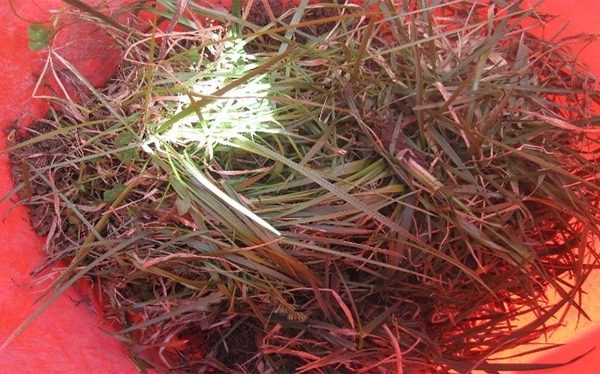
- Then place your container or 12 oz. cup in the middle of the bucket.
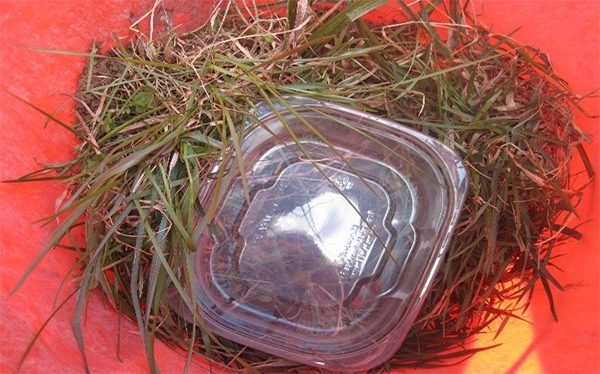
- Take your trash bag and put it over the bucket. Then use your small rocks and put it in the middle of the trash bag which will push the bag down a bit. Use the duct tape or string and wrap or tie it around the bag to keep it in place. You can rip off any extra length of the trash bag if you want.
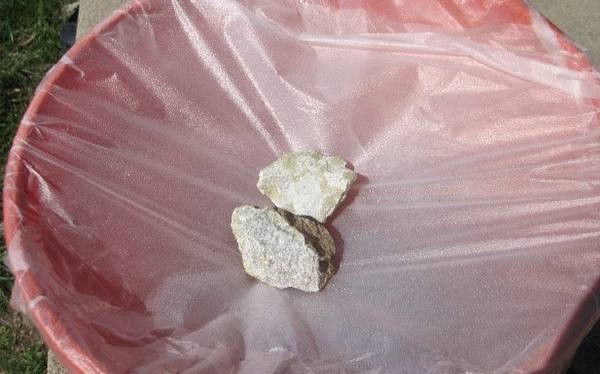
- Take your bucket outside and find a sunny spot to leave it in. If it is not a sunny day, place it in a non-shady area.
- Leave the bucket there for at least a day, if not more. If it is a sunny day it will work faster. After time, go check your bucket. Take the bag off and see if there is any water in the cup. There should be a fair amount of water. Be sure to filter and/or boil any water collect from the wild. You may want to have set more than one solar still at a time.
Related: How to Build a Solar Oven
How the Prepper’s Solar Still works:
The vegetation has water within its system. Once it is plucked from the ground or a tree it dies. When you put it in the bucket and you seal it, the heat of the sun or day beats on the vegetation. Since it is inside the bucket it will get very warm, causing the water to evaporate from the plants. The water goes up unto the air and it then hits the trash bag. It then turns unto drops of water. The water begins to slide down the bag. It goes down to where the small rocks are weighing down the bag at. It then drops off the bag and falls unto the cup. The cup then begins to fill up.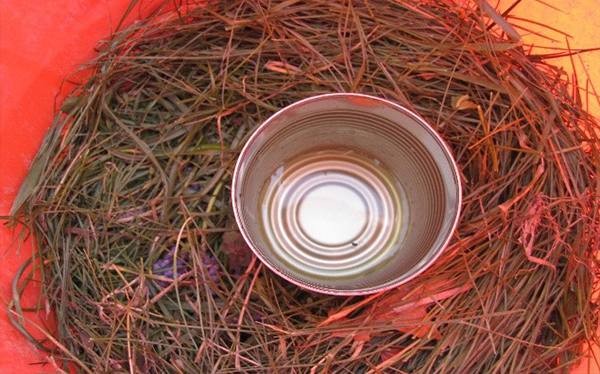
You may also like:
 Powering an Off the Grid House (Cost-Effective)
Powering an Off the Grid House (Cost-Effective)
If You are too Weak to Prep than You Need to Watch This Video (Video)
3 Amazing Winter Survival Stories
The 7 Primitive Cooking Methods
How to Build Your Own Ghost Gun
About Blake Alma:
Blake Thomas Alma is the author of many books, The Outdoorsmen Bible, Harvesting Nature’s Bait Shop, This World can be Cold and Bitter, More Than Just a Rat Trap, and The Godly Outdoorsman’s Devotionals. He is always sharing his growing knowledge of his master’s creation, the outdoors. A warm smile comes upon his face when he walks through the outdoors. He greatly enjoys Fishing, Small Game Hunting, Target Practice, Survival, Camping, Hiking, Bait Harvesting, ATVing, and outdoor educating. But above all outdoor pursuits, his heart pores out like a might river toward trapping. Perhaps his greatest skill of all of his outdoor pursuits. He is continually growing in the knowledge of trapping and in his master, Jesus, the creator of the outdoors. He also enjoys learning DIY outdoor pursuits.
ou never know when the stock market might crash or when you find yourself lost in the woods. So why not learn this great art as Blake has and survive like an outdoorsman! His author page can visited at https://amazon.com/author/blakealma.

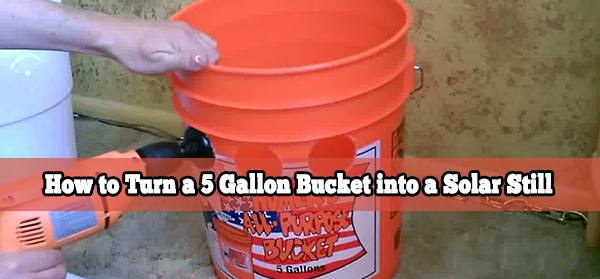




















You may want to be careful what greenery you put in the bucket. Don’t use any poisonous plants, stinging nettles, poison ivy or oak, anything with milky sap, etcetc. I don’t know if oils, sap, or anything someone may be allergic to would affect them but best to stay safe.
water is the vapor all other oils and such should stay in the plant — it is like distilling water it matters not what you distill the vapor is condensed into water — they had a show about this distilling process on pbs a while back .. they distill septic tank water and it was safe to drink and ;; it sounds gross but when they tested had no germs in it .. but hey do you really know where the water in your pipe has been
An adaption of digging a hole in the ground. I think that the idea of using a bucket is an elegant development.
However, a couple of thoughts that immediately come to mind:
1) use a bigger cup and put a tube down so that you can suck it up; or use a hand held vacuum pump.
2) place damp soil instead of vegetation. A couple of inches/centimeters [if you’re more modern :)] of damp soil should give more water than a similar amount of vegetation. But remember to change the soil regularly.
3) In a desert, this would be way to re-cycle urine, and make it potable. Pee into the bucket filled with sand. A trick may be to put a stiff tube set into the sand, and pee into the tube. A funnel would be necessary for the ladies. [they may object but water is essential in the desert and the GENTLEMEN can always turn around instead of peeking!
If it is available, use unclean water in the bottom of the bucket (water from stream, curb drain, cow pond .)
My thought, exactly. If you use a small container that’s heavier than the one shown so it won’t float easily, filling the bucket with a few inches of the “not potable” water should yield more potable water, faster. No vegetation needed, unless of course there’s NO water available.
This is a fantasy… It will not provide enough liquid to keep a mouse alive… Dream on…
This is a world of good informati8on. I will use it.
This is an extreme emergency measure. This method will only prolong life a short while. Unless the system is extensive, it does not provide the gallon a day that is necessary to sustain life. Notice the container in the picture. It is at most an 8 ounce container. It will need to be filled up 16 times in one day in order to provide a gallon of water. This used to be the method used in lifeboats but it is old technology. Today lifeboats are equipped with reverse osmosis units.
I am interested in reverse osmosis. Can you point me in the direction of more information ?
RO units are all over the internet. Most include the membrane, various filters front and back. You can use a 12 volt DC pump (RV supplies) and a car battery with a solar panel to recharge. With proper maintenance you will have all the pure water you need.
You don’t need a gallon a day. Right now I only drink more or less half a gallon a day and I’m doing fine. Not to mention that you can set up multiple stills and the small container may just be for demonstration.
The first picture of the bucket having holes being drilled into it is NOT from this project. It appears it is from an older article about how to make a portable air conditioner. For this solar still project, holes in the bucket would be counter-productive.
Instead of a bucket, I want to try a large, shallow box, with the vegetation. Salt water, the next time I go to the beach. I would like to try the creek water and follow up with sample to a lab. I watched a video a few months ago, where the “survivor” tied a plastic bag to a tree limb. After a few hours in the Sun, transpiration, deposited water into the plastic bag. All of these are things I want to try. It would definitely amaze my little Facegram and Instabook pals.
This is good in theory, but in practice, you will be lucky to get a couple of ounces of water in a day this way, So to get enough water to survive a day, you would probably need fifty or more buckets, A complete waste of time, The hole in the ground is even worst as you will probably lose more water digging the hole, than you will gain in a couple days.
Really depends on where you dig the hole, three feet from a pond or shore line and 2 feet down will provide a constant new source to be evaporated. Painting the bucket black and using black plastic will speed the process. Ask me how I know.
Tried this on a cloudy day using a black dollar store washbasin instead of the bucket. Put 12 oz of dirty pond water in the bottom and a ceramic bowl as the catcher. After 3 hrs there was 6.5 oz of clean water in the bowl. Tried again in the sun and got 10.3 oz. Small enough to add one to each bug out bag for our family as it weighs next to nothing. Thanks for the idea.